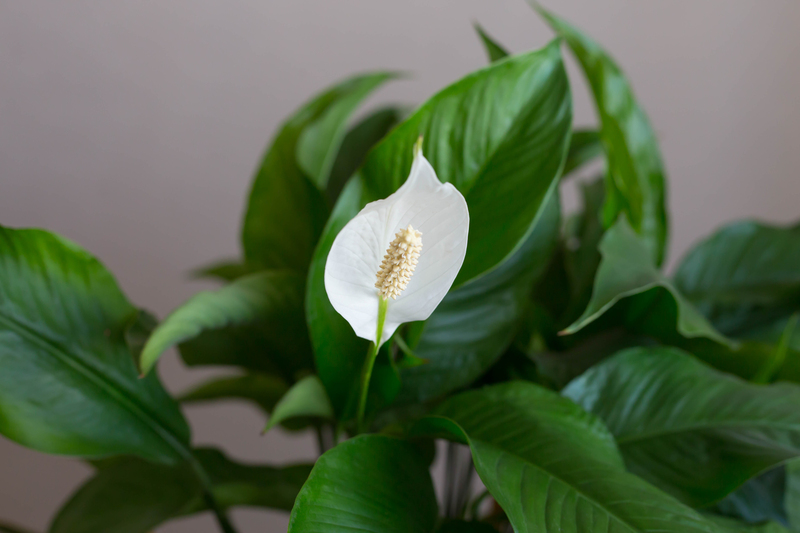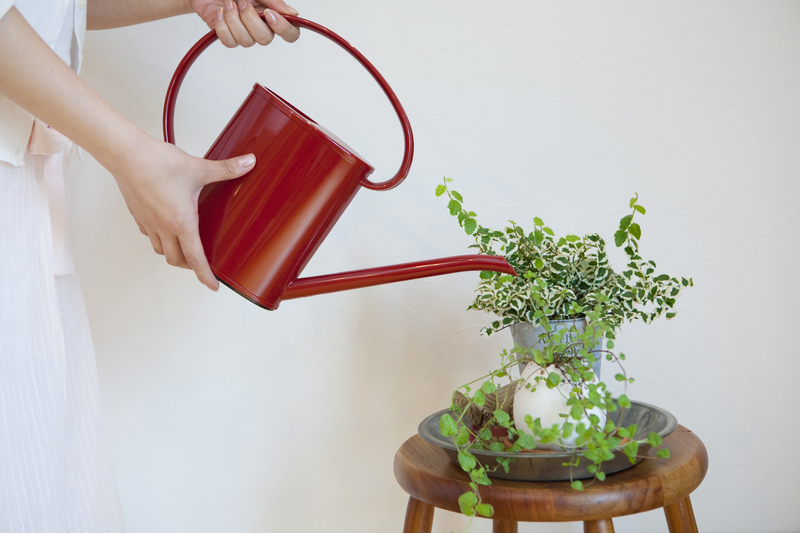Designing Your Perfect Vertical Garden
Posted on 26/09/2025
Designing Your Perfect Vertical Garden: A Comprehensive Guide
Have you ever wished for a lush garden but felt limited by space? Vertical gardening, also known as living walls or vertical landscaping, is transforming homes, patios, and cityscapes all over the world. Whether you live in a small apartment or have an expansive backyard, designing your perfect vertical garden is not only possible, but also highly rewarding.
Why Choose a Vertical Garden?
Vertical gardens offer numerous benefits beyond the conventional beauty of greenery. Here are some compelling reasons to introduce a vertical green space into your environment:
- Maximizes limited space: Perfect for balconies, patios, and city apartments.
- Improves air quality: Plants filter pollutants, providing naturally cleaner air indoors and outdoors.
- Thermal insulation: Living walls can help regulate building temperature, reducing energy costs.
- Noise reduction: Dense plant foliage absorbs sound, creating a tranquil oasis.
- Enhances mental well-being: Greenery is proven to reduce stress and boost mood.
- Encourages biodiversity: Attracts beneficial insects like bees and butterflies.

Planning Your Vertical Garden Design
To craft your ideal vertical garden, a thoughtful plan is crucial. Consider these essential steps before you start planting:
1. Choose the Right Location
Location matters. Identify a space that gets suitable sunlight and is protected from extreme weather. Assess exposure: Does your spot receive full sun, partial shade, or deep shade? This will dictate your plant selection and watering needs.
2. Determine Your Garden Type
Vertical gardens take many forms. Some popular options include:
- Modular panels: Commercial or DIY frames that fit together like tiles.
- Pocket planters: Felt or fabric containers that can be hung on walls or fences.
- Trellises and lattices: Ideal for climbing or vining plants.
- Pallet gardens: Repurpose wooden pallets as rustic, vertical displays.
- Stacked pots or tower gardens: Create columns of color and texture.
3. Deciding on Scale and Style
Do you dream of a full-scale living wall, or are you after a compact, apartment-friendly version? Define whether you prefer:
- Modern minimalism - geometric arrangements, clean lines, and monochrome palettes.
- Rustic charm - natural woods, reclaimed materials, clusters of lush plants.
- Edible gardens - packed with herbs, strawberries, and salad greens.
- Ornamental elegance - featuring colorful flowers and decorative foliage.
4. Measuring and Mapping
Measure your chosen wall or space carefully; proper dimensions ensure the final result looks pleasing and fits perfectly. Sketch your design or use a digital tool for visual reference.
Choosing Plants for Your Vertical Garden
Not all plants are suited for vertical gardening. The best plants for vertical gardens share key qualities: compact growth, shallow root systems, and tolerance to your site's conditions.
1. Sun-Loving Species
- Succulents (e.g., sedum, echeveria, hens and chicks)
- Herbs (oregano, thyme, basil)
- Flowering annuals (petunia, verbena)
2. Shade-Tolerant Plants
- Ferns
- Pothos
- Philodendron
- Peace lily
- English ivy
3. Edible Choices
- Salad greens (lettuce, arugula, spinach)
- Strawberries
- Chili peppers
- Cherry tomatoes (with support)
Tip: Combine evergreens and seasonal bloomers for year-round visual interest.
Building a Vertical Garden Step by Step
Constructing your vertical landscape may seem daunting, but by following a clear process, you'll reap lush rewards. Here's an in-depth guide to creating your dream vertical garden:
1. Gather Your Materials
- Framework (panel, pallet, trellis, or stackable pots)
- Wall fixings (L-brackets, screws, hooks)
- Grow medium (potting mix suited to your plant choices)
- Irrigation system (drip lines or hand-watering can)
- Waterproof membrane (if mounting directly to your building)
2. Prepare the Wall
- Clean the surface of dust and debris.
- If inside, add a vapor barrier to protect walls from moisture.
- Mark anchor points using a level for accurate alignment.
3. Install the Framework
- Secure panels, trellises, or pocket systems firmly to the wall or fence.
- For freestanding vertical gardens, ensure stability by weighing down the base or anchoring supports.
4. Add Growing Medium
- Fill pockets, pots, or trays with the appropriate soil mix--lightweight, well-draining, and nutrient-rich.
- Avoid heavy garden soil which may retain too much water or compact over time.
5. Plant!
- Arrange your chosen foliage according to light requirements and visual balance.
- For a natural look, stagger placement; for geometric designs, plant in rows and columns.
- Gently water in each plant, ensuring roots make contact with the growing medium.
6. Set Up Irrigation
- Install a drip irrigation system for large or high-maintenance gardens; use water globes or hand-watering for small installations.
- Check drainage regularly - avoid pooled water at the bottom.
Vertical Garden Maintenance Tips
A great vertical garden looks after itself--almost! To keep it thriving, remember these maintenance essentials:
- Water consistently: Plants in vertical gardens can dry out faster, especially up high.
- Feed occasionally: Use a balanced liquid fertilizer according to plant needs.
- Prune regularly: Trim dead leaves, overgrowth, and fade flowers for vigor and shape.
- Monitor for pests: Check both sides of leaves and in crevices.
- Replace as needed: Even the best-kept vertical gardens may lose a plant or two; slot in replacements to maintain density and beauty.
Creative Ideas to Personalize Your Vertical Garden
An innovative vertical garden design can be a true expression of your personality. Here are some inspiring ideas to make your living wall uniquely yours:
- Mix textures and colors: Alternate bushy ferns with succulents, use variegated leaves, and add flowering splashes.
- Incorporate art: Hang decorative ceramic tiles, mirrors, or weatherproof sculptures within your plant frame.
- Upcycle creatively: Use vintage shoe organizers or rain gutters as unconventional planters.
- Theme your garden: Try Mediterranean herbs, pollinator-friendly wildflowers, or tropical foliage arrangements.
- Build privacy: Use tall grasses or lush evergreens as a living screen between neighbors.
Common Mistakes to Avoid When Designing Vertical Gardens
Avoid these pitfalls to ensure your perfect vertical garden flourishes for years to come:
- Underestimating weight: Wet soil and mature plants can get heavy--ensure your wall and supports can handle the load.
- Ignoring drainage: Consider where excess water will go. Poor drainage risks root rot or wall damage.
- Poor plant selection: Don't mix sun-loving and shade-loving plants in the same section; match species to microclimates within your wall.
- Overcrowding: Allow space for each plant to grow without competing for resources.
- Neglecting edges and corners: Fill every visible pocket for maximum beauty and design cohesion.

FAQs About Vertical Garden Design
- Q: Can I build a vertical garden indoors?
- Absolutely. Many vertical garden systems are designed for interiors. Just ensure you provide sufficient light--consider grow lights if your space is dim--and protect your walls with a waterproof backing.
- Q: Are vertical gardens expensive?
- Costs depend on size, materials, and plant choices. DIY pallet or pocket gardens are budget-friendly, while commercial modular systems with built-in irrigation can be pricier. Over time, a well-designed vertical garden pays for itself in beauty and well-being.
- Q: What if some plants die?
- No problem! Simply remove the dead plant, amend the soil if needed, and replant. Vertical gardens are forgiving and easily refreshed.
Conclusion: Start Designing Your Perfect Vertical Garden Today!
Designing your ideal vertical garden is about more than just stacking plants on a wall; it's an act of creativity and sustainability. By carefully choosing the right location, structure, and plant selection, you can transform compact spaces into thriving green masterpieces. From practical herb gardens to stunning floral displays, vertical landscaping is a fun and accessible way to reconnect with nature--wherever you live.
Whether you're a seasoned gardener or a total beginner, let your imagination take root and reach new vertical horizons. With the guidance above, your dream vertical garden is only a few steps away!

